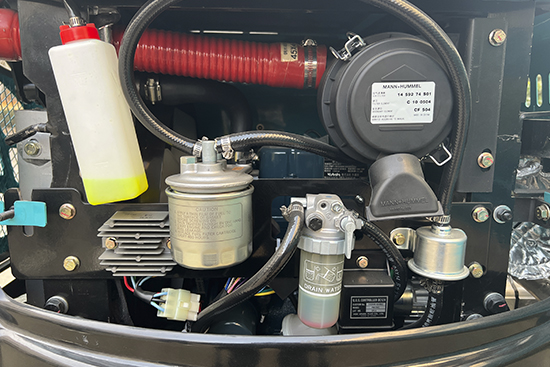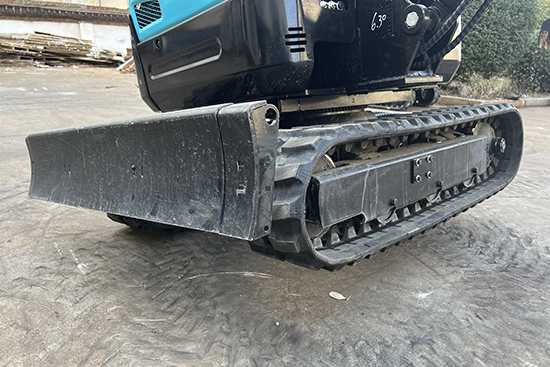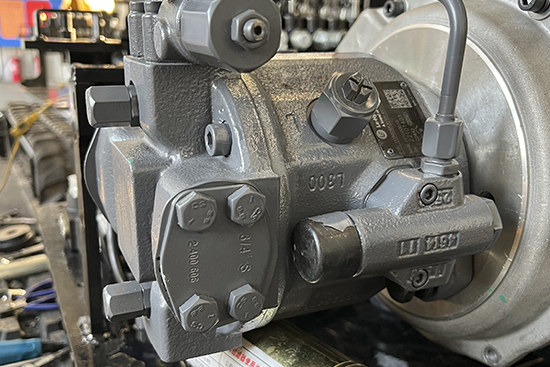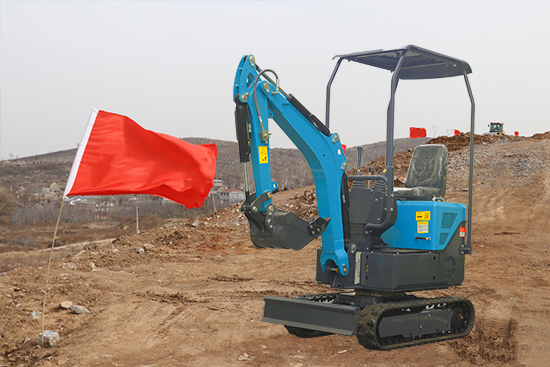Welcome to Jining Yizhan International Trade Co., Ltd
The structure of small excavators is crucial to their performance. How much do you know about it?
Structure and Performance Optimization of Small Excavators: A Comprehensive Analysis and Application Guide
In engineering construction and earthwork operations, small excavators have become indispensable engineering machinery due to their flexible operation and efficient working capabilities. Their structural design not only determines the appearance of the equipment but also significantly influences performance. This article delves into the structural components of small excavators and their role in performance optimization, helping you better understand and select the right equipment.
1. Power Unit: The Core Power Source of Small Excavators
The power unit of small excavators typically uses an upright multi-cylinder, water-cooled, one-hour power-rated diesel engine. The performance of the power unit directly determines the excavator's operational efficiency and power output. A high-performance power system provides robust power support, enabling the excavator to excel in complex terrains and heavy-duty operations. For example, a diesel engine with moderate power can ensure digging force while effectively reducing fuel consumption, enhancing economic efficiency. Selecting a power unit with appropriate power is key to balancing power and economy.

2. Transmission System: The Key to Efficient Energy Transfer
Small excavators use a hydraulic transmission system to transfer the diesel engine's output power to the working device, slewing device, and travel mechanism. The hydraulic transmission system offers advantages such as stepless speed regulation, smooth transmission, and compact structure. Common types of transmission systems include single-pump or double-pump single-loop quantitative systems and double-pump double-loop quantitative systems. A well-designed transmission system can significantly improve the excavator's operational efficiency and flexibility while reducing failure rates. For instance, an efficient hydraulic system can quickly respond to operational commands, minimize energy loss, and enhance overall performance.
3. Slewing Mechanism: Ensuring Flexible Operation
The slewing mechanism is a crucial component of small excavators, allowing the working device and upper structure to rotate left or right for digging and unloading. The slewing mechanism's transmission forms include direct and indirect transmission. Its performance directly affects the excavator's operational range and flexibility. An efficient slewing mechanism can shorten operational cycle times and improve productivity. For example, advanced slewing brake technology ensures stable operation in complex conditions, reducing wear caused by slewing inertia.
4. Travel Mechanism: Adapting to Complex Terrains
The travel mechanism supports the excavator's total mass and performs travel tasks. Common forms include crawler and wheel types. Crawler travel mechanisms offer excellent adhesion and passability, suitable for complex terrains, while wheel travel mechanisms provide higher mobility and transfer speeds. Choosing the right travel mechanism requires balancing actual working conditions. For example, in mines or construction sites with complex terrains, crawler travel mechanisms offer stronger grip and stability, whereas wheel travel mechanisms are more advantageous on city roads or flat grounds.

5. Working Device: The Key to Digging and Loading
The working device is the part of the small excavator directly involved in operations, including the boom, arm, and bucket. Its structural design directly affects the excavator's digging force, digging range, and operational precision. A reasonable boom and arm length ratio can optimize digging force and operational range, while the bucket's shape and capacity influence loading efficiency. Additionally, the strength and durability of the working device are crucial to withstand complex operational environments. For example, high-strength boom and arm designs can withstand greater digging forces, reducing the risk of equipment damage.
6. Hydraulic System: The "Brain" of Precise Control
The hydraulic system is the core part of small excavators, responsible for converting the engine's mechanical energy into hydraulic energy and distributing it to various actuators through control valves. The performance of the hydraulic system directly affects the excavator's response speed, operational precision, and reliability. An efficient hydraulic system can reduce energy loss and improve operational efficiency. For instance, advanced hydraulic control technology enables precise motion control, enhancing operational accuracy and efficiency.

7. Electrical System: The Key to Intelligent Control
The electrical system provides power for starting, lighting, instrument display, and the electronic control unit (ECU) of small excavators. Modern small excavators commonly use electronic control units to achieve optimal matching of the engine, hydraulic pump, control valve, and actuators, improving operational efficiency and energy-saving effects. For example, an intelligent electrical system can automatically adjust the equipment's operating parameters based on actual conditions, optimizing performance.
8. Overall Structure: Balancing Stability and Comfort
The overall structural design of small excavators needs to consider center of gravity distribution, stability, operational comfort, and maintenance convenience. A reasonable center of gravity distribution can enhance the excavator's operational stability and reduce the risk of tipping. Good operational comfort can reduce operator fatigue and improve work efficiency. For example, optimizing the cab design with a comfortable seat and good visibility can significantly enhance the operational experience.






